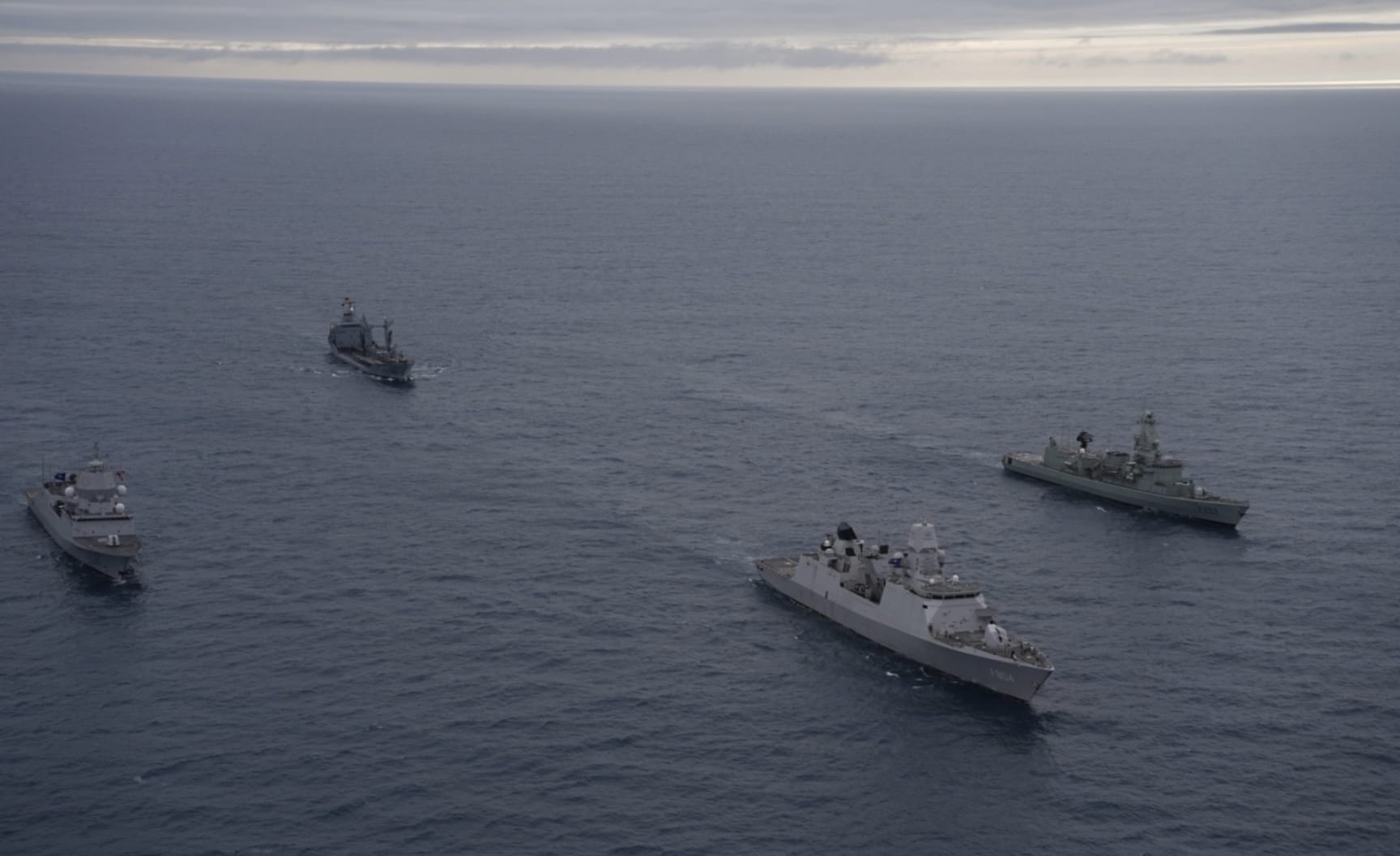NATO's Strategic Move: Warships Deployed to Patrol Arctic Waters
 The Tech Times
The Tech Times
In a significant development that underscores the strategic importance of the Arctic region, NATO has deployed warships to patrol its waters. This deployment, led by the alliance’s Standing Maritime Group 1 (SNMG1), marks a pivotal moment in the ongoing geopolitical maneuvering in the Arctic, a region increasingly at the forefront of global strategic interests.
The Arctic's Growing Strategic Significance
The Arctic has long been considered a region of untapped potential and strategic importance. Climate change has resulted in receding ice levels, making the Arctic waters more navigable than ever before. This change has opened up new maritime routes, significantly reducing shipping times between major global trading hubs. Additionally, the Arctic is believed to hold vast reserves of untapped natural resources, including oil and gas, making it a coveted area for resource exploration and economic development.
As a result, the region has seen increased interest from global powers, each vying for influence over these new opportunities. NATO's decision to send warships to patrol the Arctic is a clear indication of the alliance's recognition of the region's growing importance on the world stage.
NATO's Strategic Deployment
The deployment of NATO's Standing Maritime Group 1 (SNMG1) to the Arctic waters is a move that reflects the alliance's commitment to maintaining security and stability in the region. SNMG1, a key component of NATO's maritime capabilities, is tasked with ensuring freedom of navigation, deterring aggression, and demonstrating NATO's ongoing commitment to collective defense.
This deployment is not an isolated event but rather part of a broader strategy to enhance NATO's presence in the Arctic. It follows a series of initiatives aimed at bolstering the alliance's maritime capabilities and ensuring that NATO remains a key player in the region's security dynamics.
Implications for Global Geopolitics
NATO's presence in the Arctic is likely to have significant implications for global geopolitics. The deployment is a clear signal to other global powers, particularly Russia and China, which have also been increasing their activities in the Arctic. Russia, in particular, has been investing heavily in its Arctic capabilities, including the development of new icebreaker ships and the enhancement of its military infrastructure in the region.
China, although geographically distant from the Arctic, has declared itself a "near-Arctic" state and has expressed interest in the region's economic potential. Both countries have sought to expand their influence in the Arctic, and NATO's deployment is likely to be viewed as a counterbalance to these efforts.
The presence of NATO warships in the Arctic also highlights the alliance's commitment to ensuring that the region remains a space of cooperation rather than conflict. By maintaining a visible and active presence, NATO aims to promote stability and deter any potential aggressive actions that could threaten the region's security.
Challenges and Opportunities
While NATO's deployment is a strategic move, it also presents a set of challenges and opportunities. The harsh Arctic environment poses logistical and operational challenges for military operations. Navigating the icy waters requires specialized equipment and training, and the unpredictable weather conditions can complicate missions. However, these challenges also present opportunities for NATO to develop and refine its cold-weather operational capabilities, ensuring that the alliance is prepared to respond to any threats in the region.
Moreover, the deployment offers an opportunity for NATO to strengthen its partnerships with Arctic nations, fostering greater cooperation and collaboration in addressing the region's security challenges. By working closely with Arctic states, NATO can enhance its understanding of the region and develop strategies that promote peace and stability.
Conclusion
NATO's decision to send warships to patrol the Arctic waters is a strategic move that reflects the alliance's recognition of the region's growing importance. As global powers continue to vie for influence in the Arctic, NATO's presence will play a crucial role in maintaining security and stability. While challenges remain, the deployment offers opportunities for the alliance to enhance its capabilities and strengthen its partnerships in this strategically vital region.
Subscribe to my newsletter
Read articles from The Tech Times directly inside your inbox. Subscribe to the newsletter, and don't miss out.
Written by
